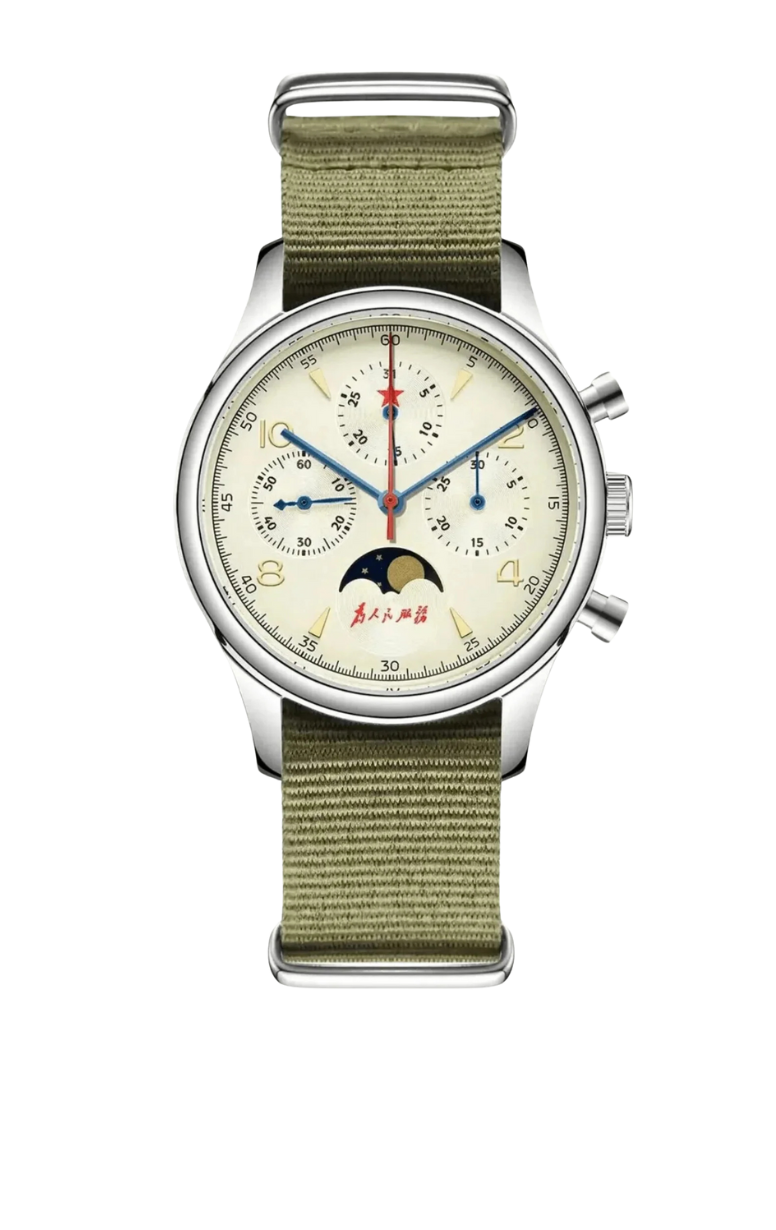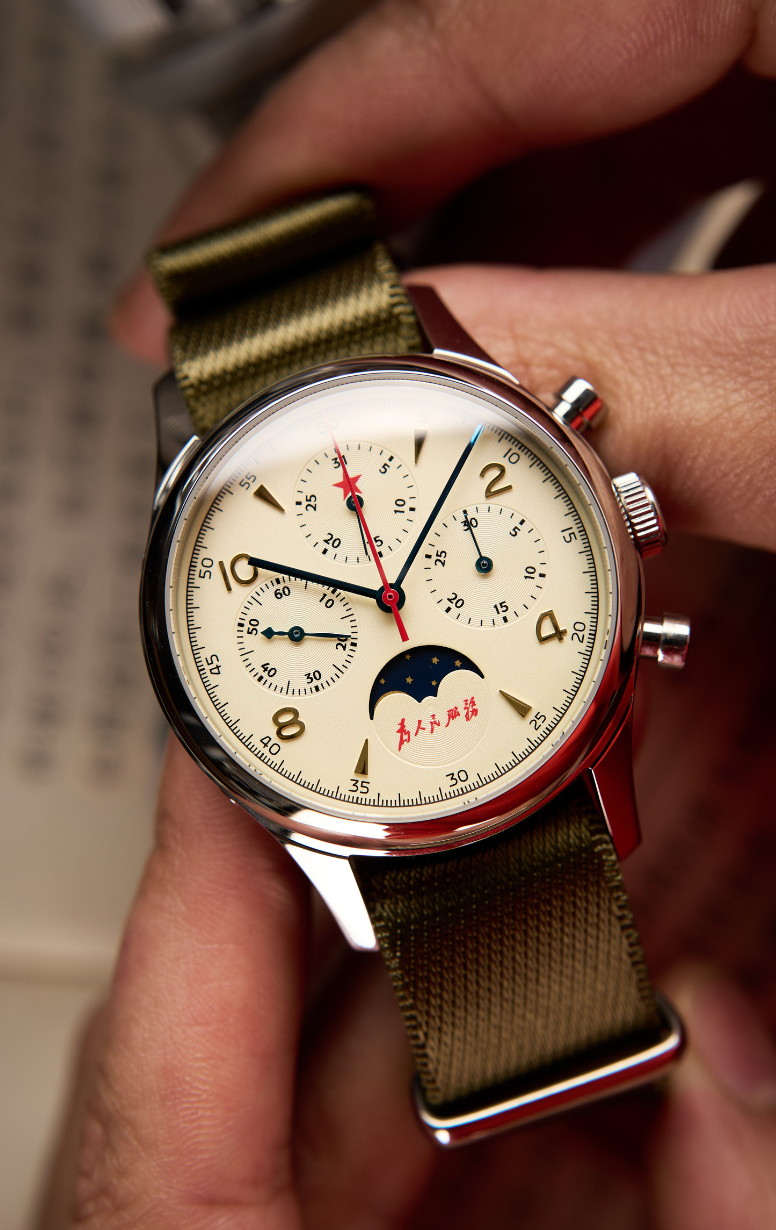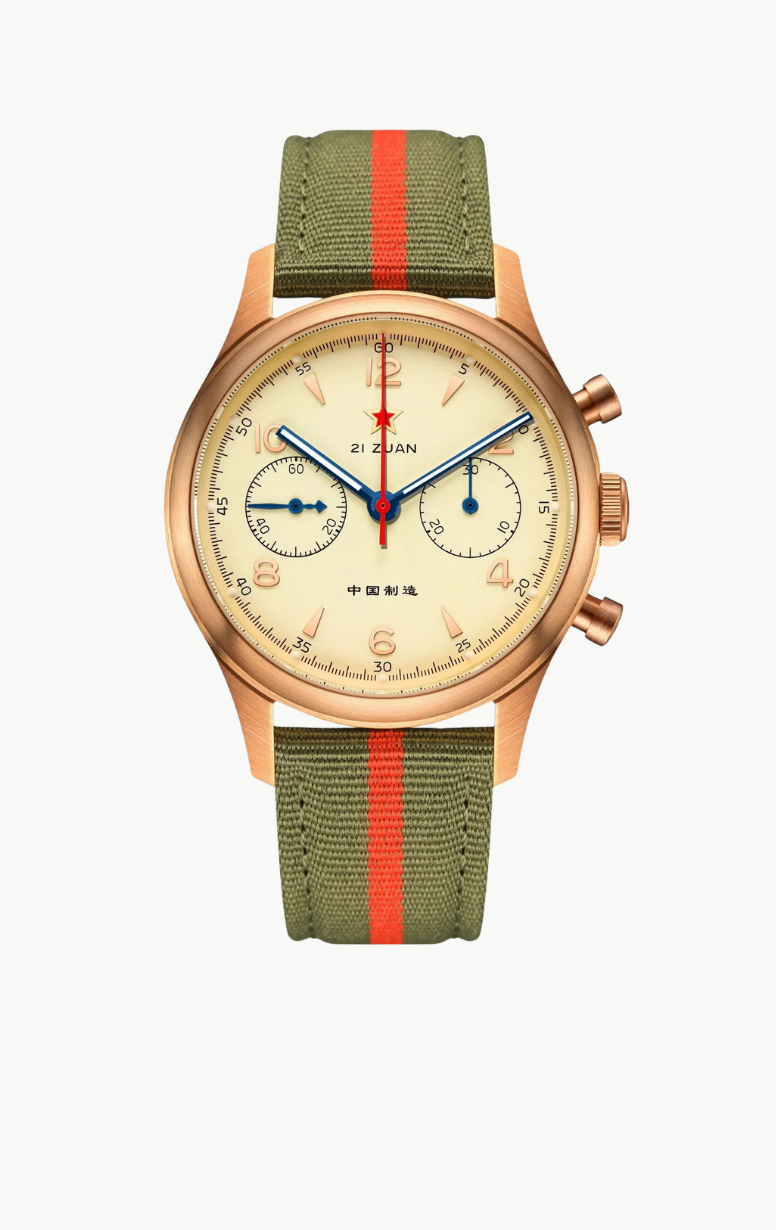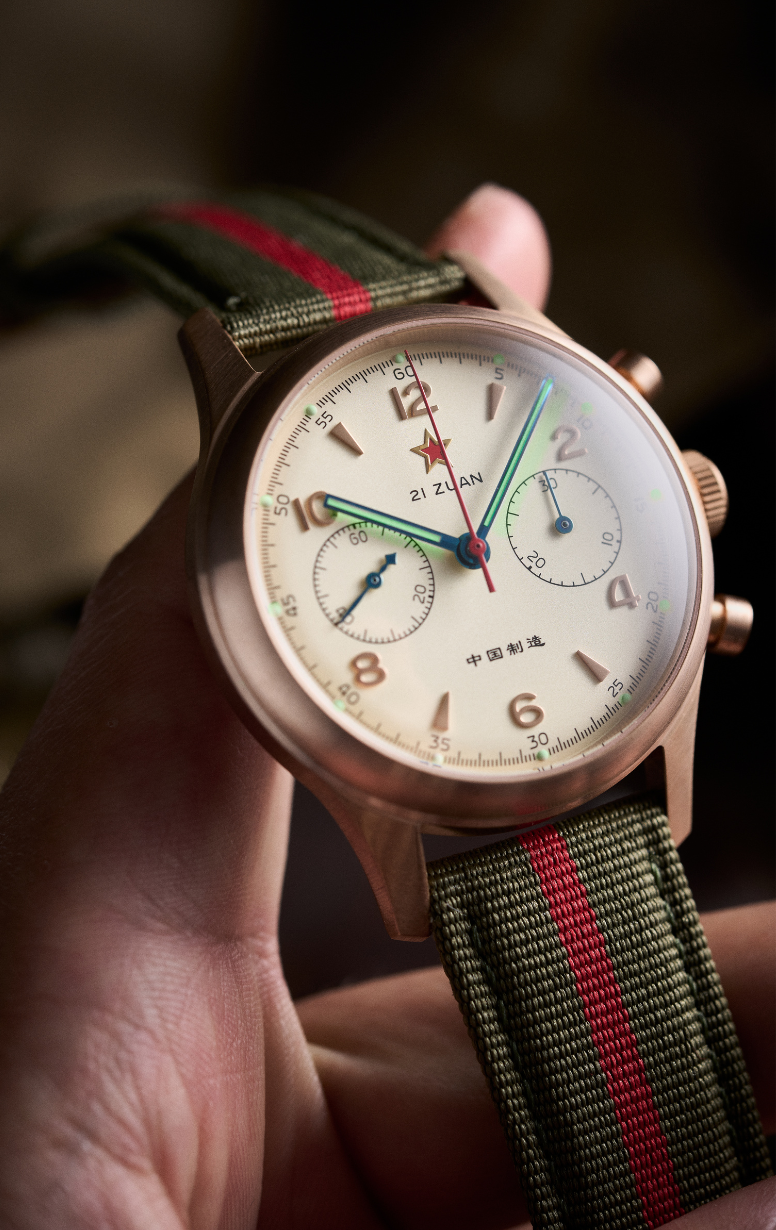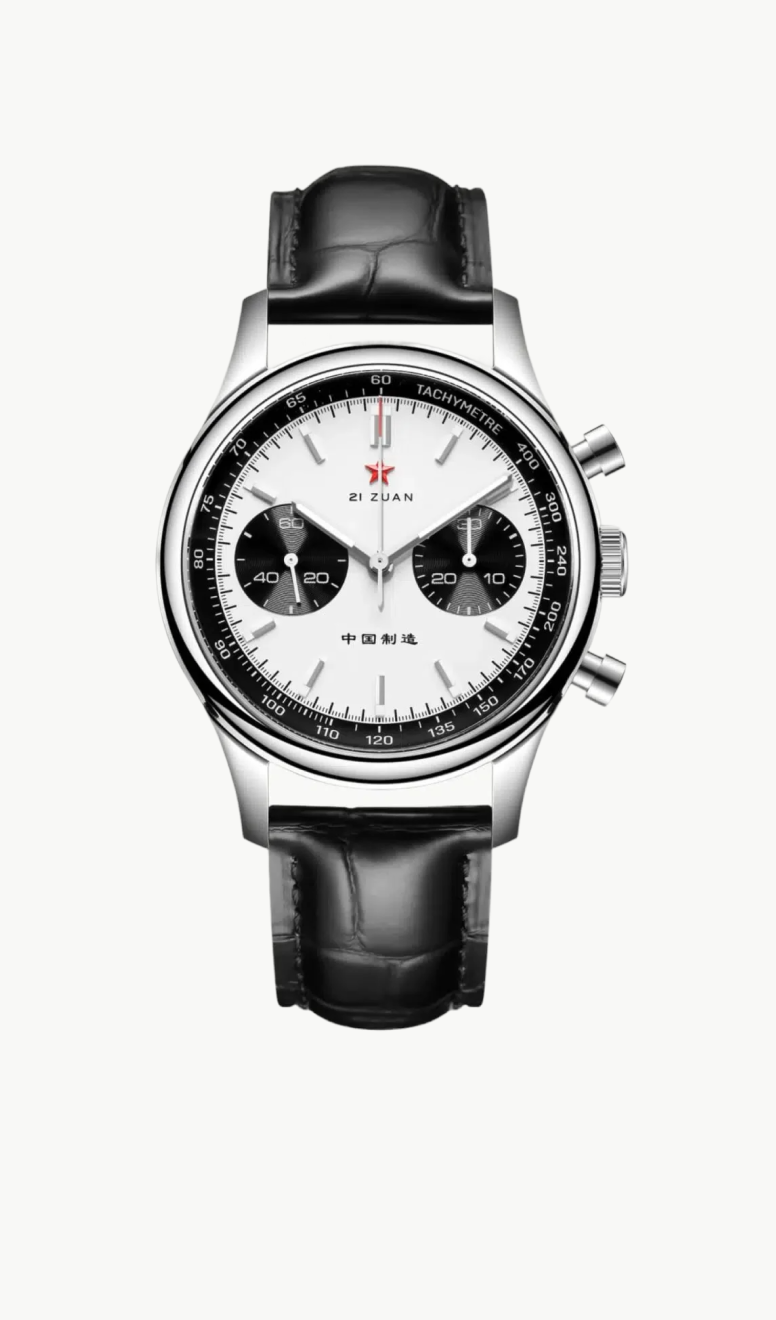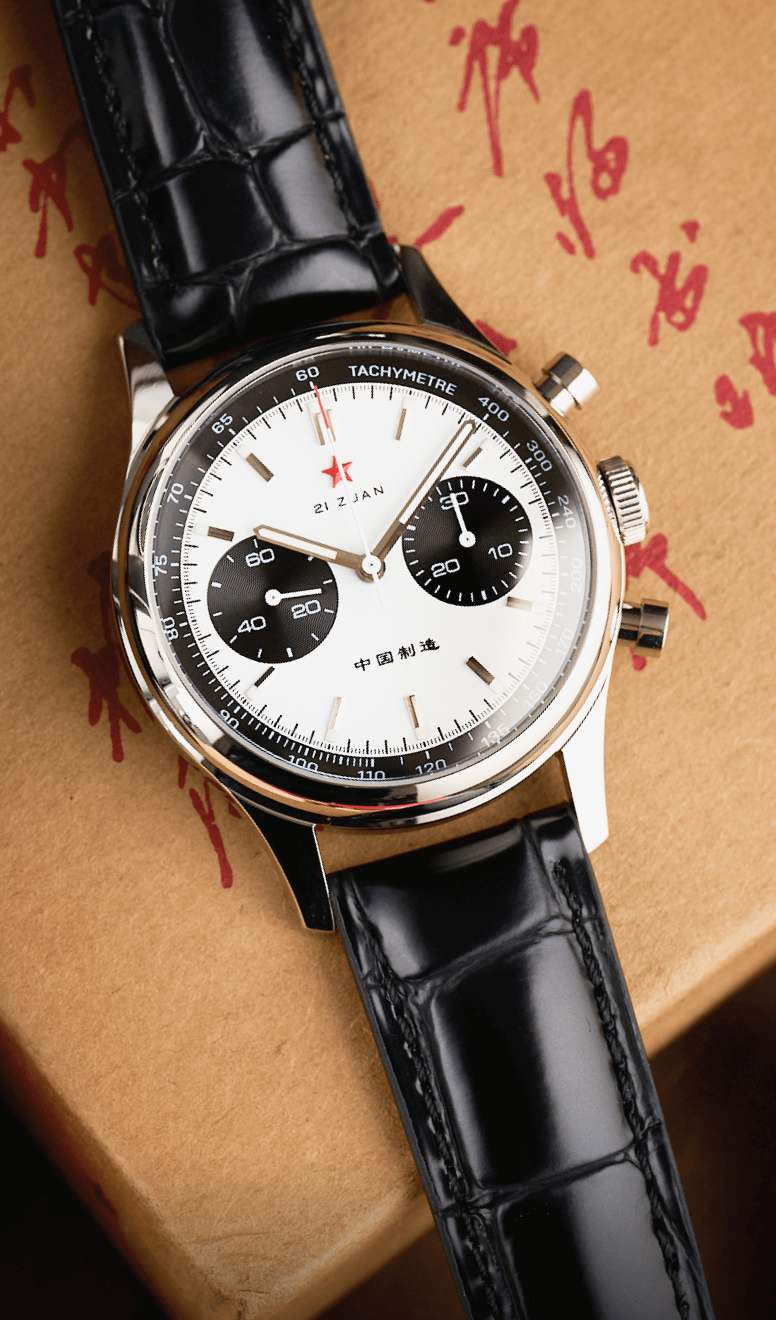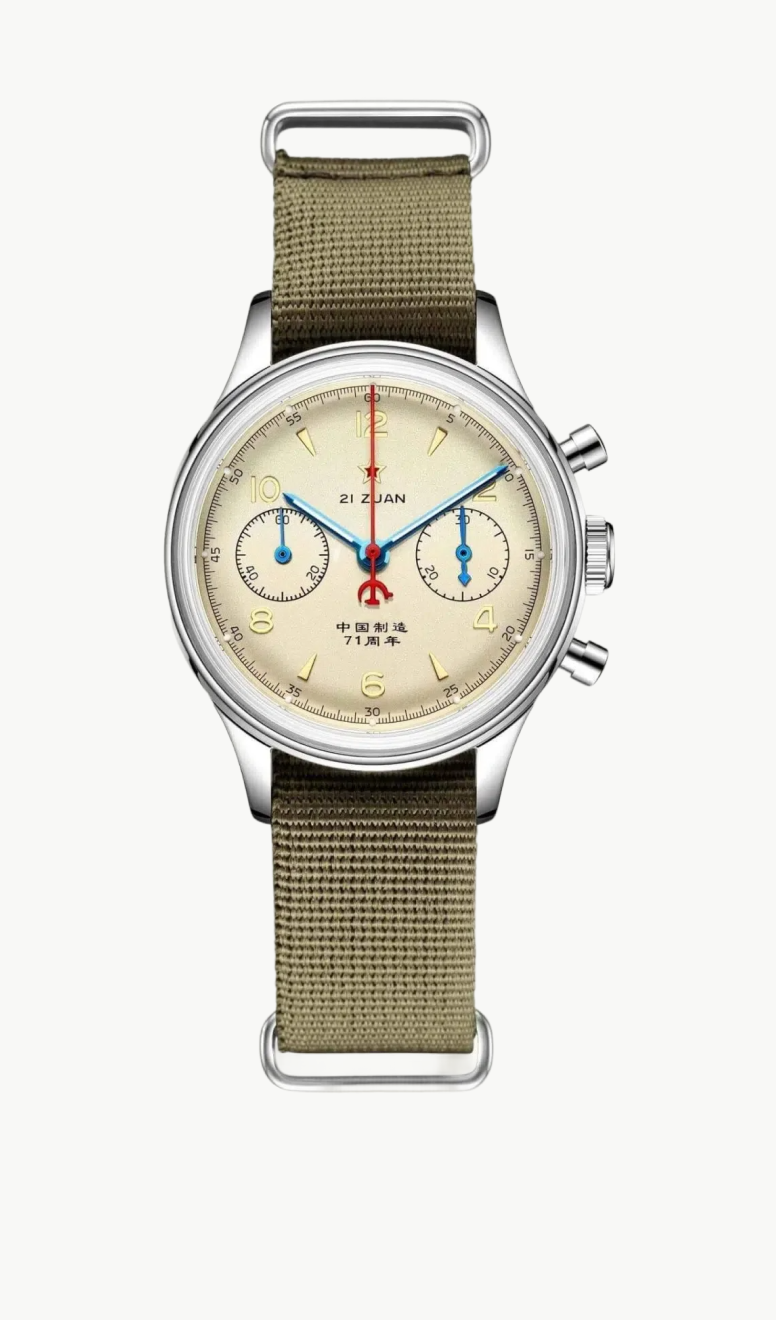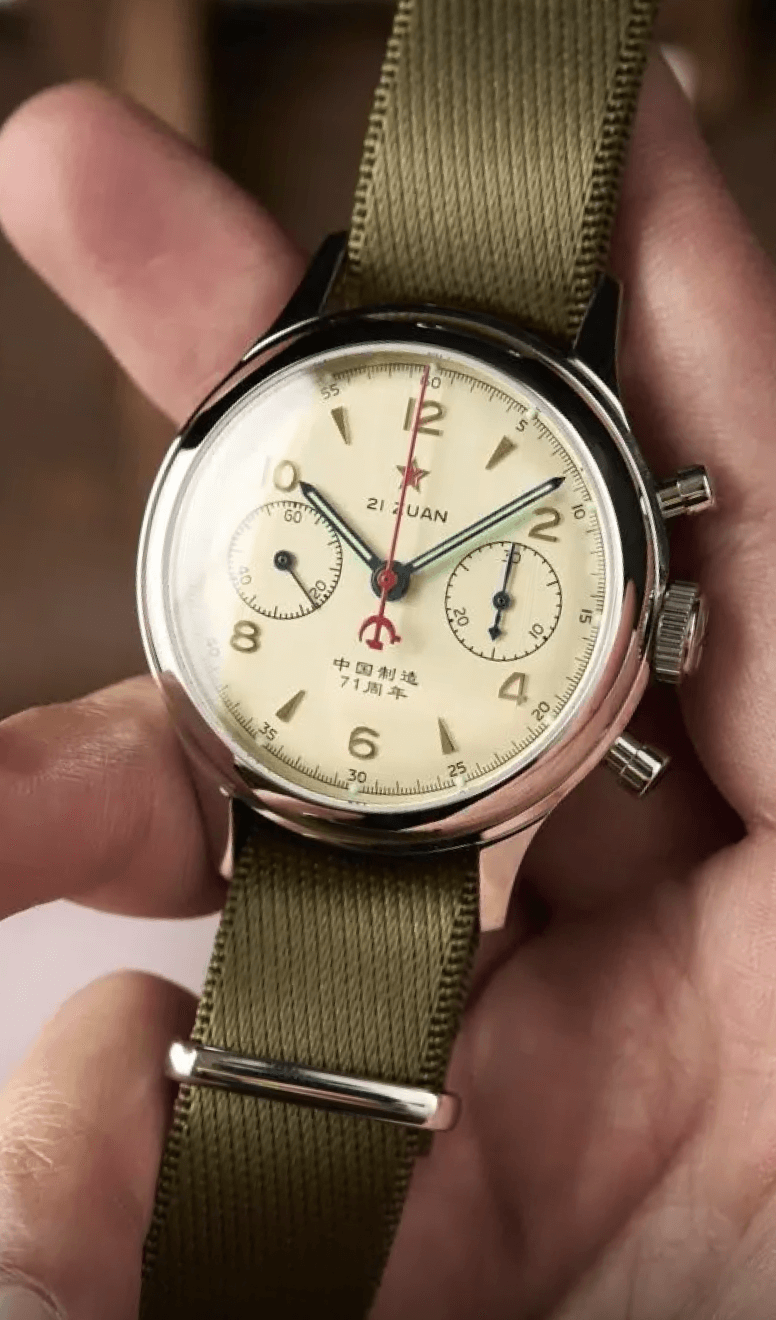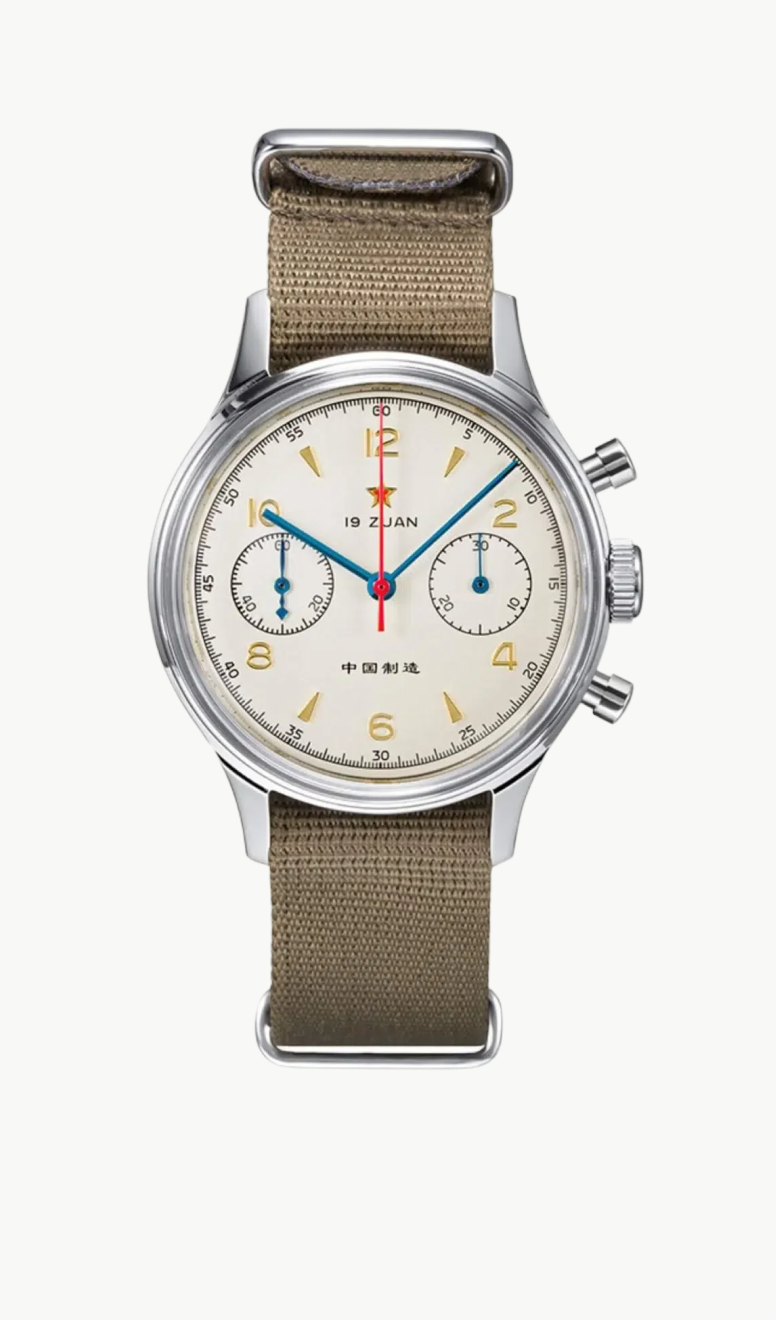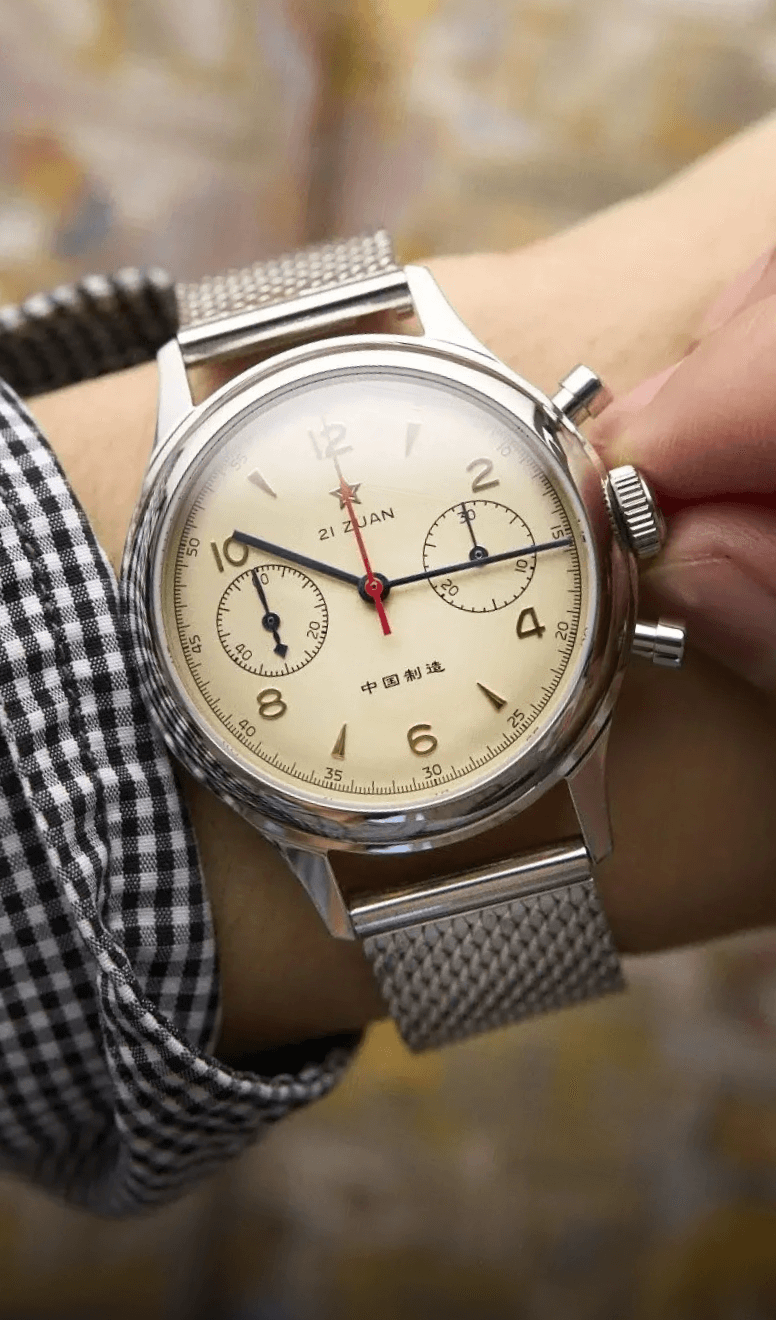So, why do some Seagull 1963 hand-winding chronographs feature a Swan Neck Regulator and others do not? To understand this, it is important to first know about the basic regulator in watches and its purpose.
What’s the purpose of this basic regulator?
The balance wheel is a central component of a watch that plays a crucial role in its timekeeping function, moving back and forth at regular intervals to create the beat rate of the watch. The regulator is an additional device that helps to maintain the accuracy of the timekeeping by adjusting the beat rate as needed. In the case of the Seagull 1963, the regulator can be adjusted using engravings that indicate the position on a scale and show how fast or slow the beat rate should be.
Before getting into the work of a swanneck regulator, it is important to first understand the Bosley regulator. The design proposed by Bosley in 1755 served as the basis for future rulers. One lever rests on the balance cock with two front pins. By controlling the lever, one can adjust the length of the balance spring which moves the watch forward or slow. With this control, the swannneck operator, as mentioned earlier, introduces water in the form of a swannneck . The switch, like that of a Bosley controller, is mounted on a balance cock, with a stud-like extension. One end of the swannneck presses the stud that comes out of the lever while on the other side, the screw turns the exercise through the compression spring that connects to the spring that is pressed through the metal sheet. Between the two ends of the water, there are (+) and (-) symbols.
As the extended stud also called the post goes from minus to plus or vice versa, the clockwise movement is slower or faster. The swannneck acts as a spring that moves against the long stud. When the screw is turned by pressing the stud, clockwise, the stud is pressed into the swannneck spring, which increases the length of the spring, lengthens the spring, reduces the movement of the pendulum, and therefore slow down this movement. Likewise, turning it clockwise turns the swan’s neck on the stud and continues the fine art that reduces the length of the hair, which makes the movement of the balance wheel smooth. The screw used in the 1963 Seagull has about 80 to 100 threads per inch, so a full turn of the screw introduces only a small increase in the strike rate. Therefore, it is possible to achieve a small change from a large change in the mechanical movement of the screw. A swannneck became an antiquarian that was often used in the 19th and 20th centuries. Besides its excellent visual function, it is often the beauty of the swannneck that attracts people’s attention. It is now included as an accessory of expensive watches as it is a sight to behold and a feast for the connoisseur’s eye.
That’s all about the swannneck regulator. For the 1963 Seagull chronograph watch, there are two options with and without a swannneck. It is a personal opinion if you find it worthwhile to switch to a movement that has one and we hope that this short article has guided you to make that easy choice.
Shop your Seagull 1963 swanneck here.





